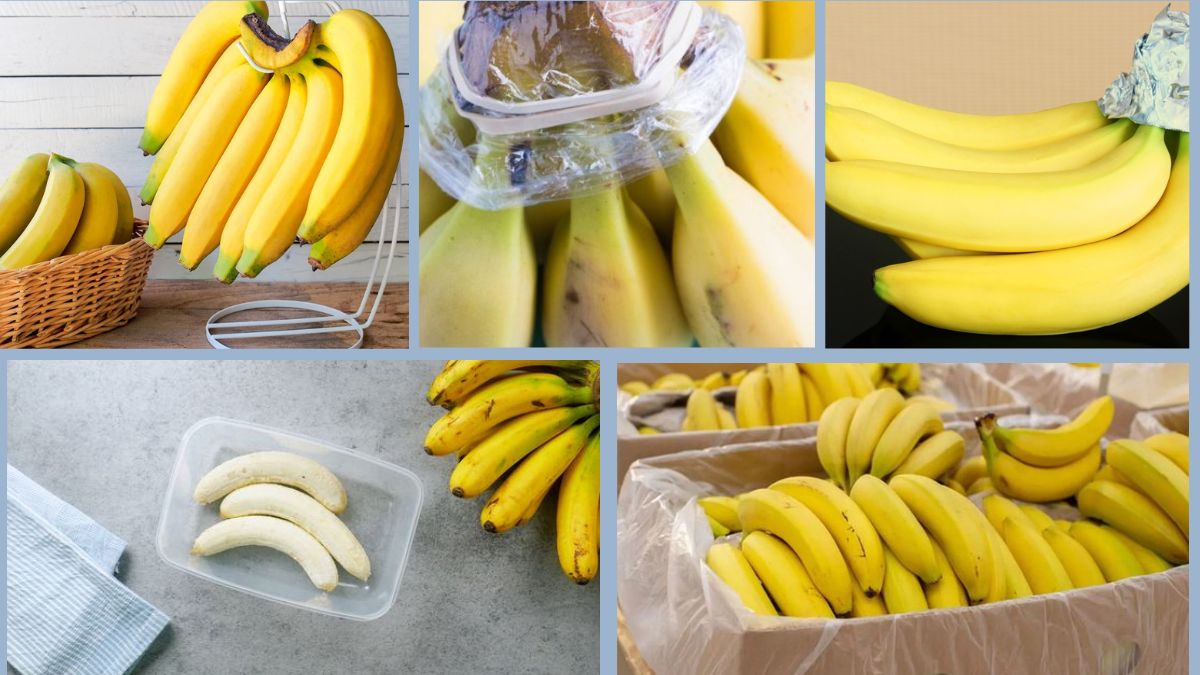Bananas are one of the most loved fruits worldwide. They’re delicious, affordable, portable, and packed with nutrients like potassium, vitamin C, and fiber. However, they ripen—and overripen—surprisingly fast, often turning brown and mushy before you can enjoy them all.
If you’ve ever asked yourself, “Why do bananas ripen so fast—and how can I stop it?” this comprehensive guide is for you. Let’s explore how to store bananas properly to extend their shelf life, delay ripening, and reduce food waste—without using any artificial preservatives or non-veg methods.
Why Bananas Ripen So Quickly
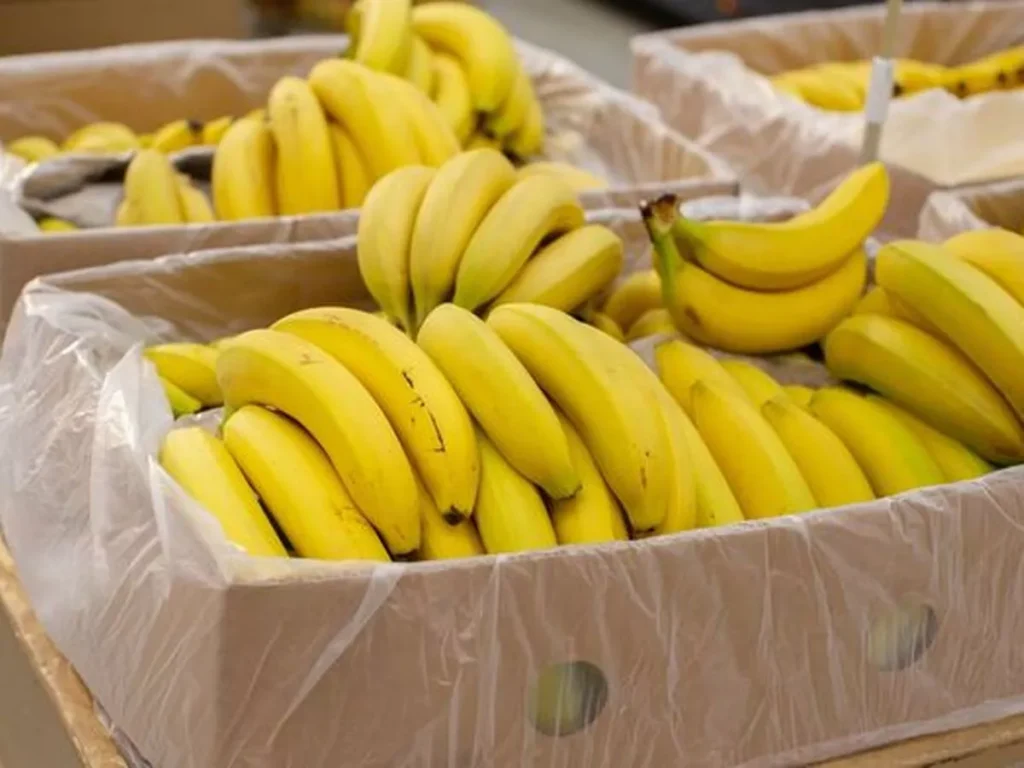
Bananas are climacteric fruits, meaning they continue to ripen after being picked. The ripening process is driven by ethylene gas, a natural plant hormone they emit. As bananas produce ethylene, it speeds up the softening and browning process—especially when stored improperly.
Here’s what causes bananas to ripen faster:
- Warm temperatures
- High humidity
- Exposure to other ethylene-producing fruits
- Direct sunlight
- Mechanical damage (bruising or pressure)
Understanding these factors can help you manipulate the environment to slow down ripening.
1. Choosing the Right Bananas for Storage
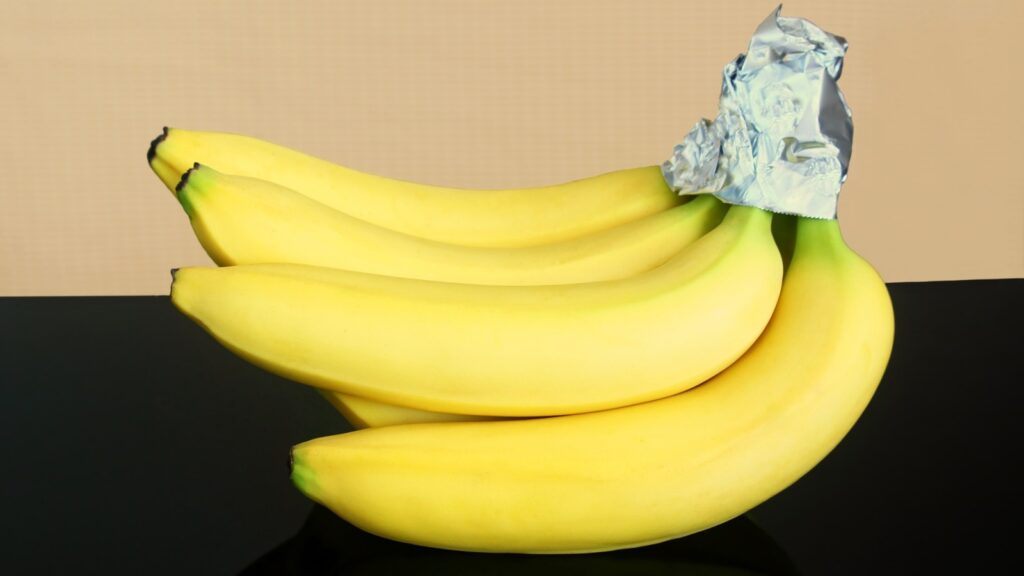
Start by buying bananas at the ideal stage of ripeness depending on how soon you plan to consume them.
- Green or slightly yellow bananas: Best if you want them to last longer.
- Bright yellow bananas: Good for immediate consumption or for use within 2–3 days.
- Spotted or brown bananas: Overripe but perfect for baking, smoothies, or freezing.
Tip: Avoid bunches with bruises, black spots, or damaged stems—they’ll ripen and spoil more quickly.
2. General Storage Rules to Prevent Quick Ripening
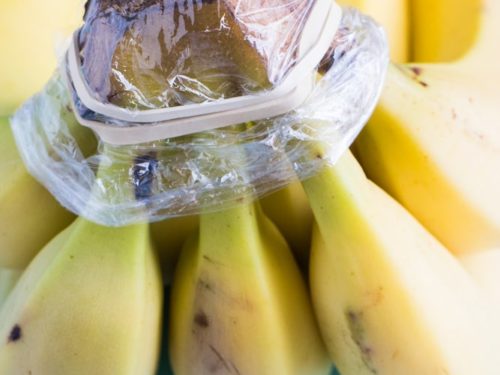
DO:
- Keep bananas cool, around 12–15°C (54–59°F).
- Store them away from direct sunlight or heat sources.
- Separate them from ethylene-producing fruits like apples, tomatoes, avocados, and melons.
- Use banana hangers or hooks to avoid pressure bruising from contact with hard surfaces.
DON’T:
- Store bananas in sealed plastic bags (unless refrigerating).
- Stack bananas on top of each other.
- Wash bananas before storage (moisture can lead to mold or rot).
3. Storage Methods to Slow Ripening
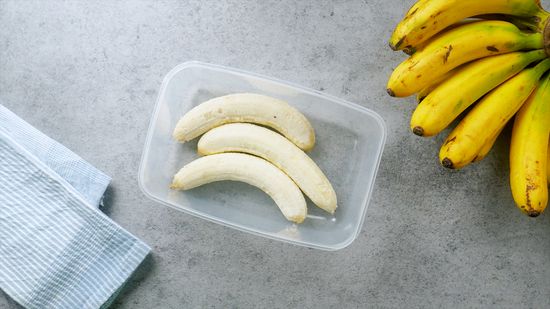
A. Room Temperature Storage (Short-Term)
If you plan to eat your bananas within a few days, room temperature is fine—but optimize conditions:
- Store bananas in a cool, shaded spot (like a pantry or on a kitchen counter away from windows).
- Use a banana hanger to allow air to circulate around them and reduce bruising.
- Wrap the stems in plastic wrap or aluminum foil. This slows the release of ethylene gas from the stems, reducing overall ripening.
DIY Tip: Tear the bunch apart and wrap each stem individually for better results.
B. Refrigeration (Medium-Term)
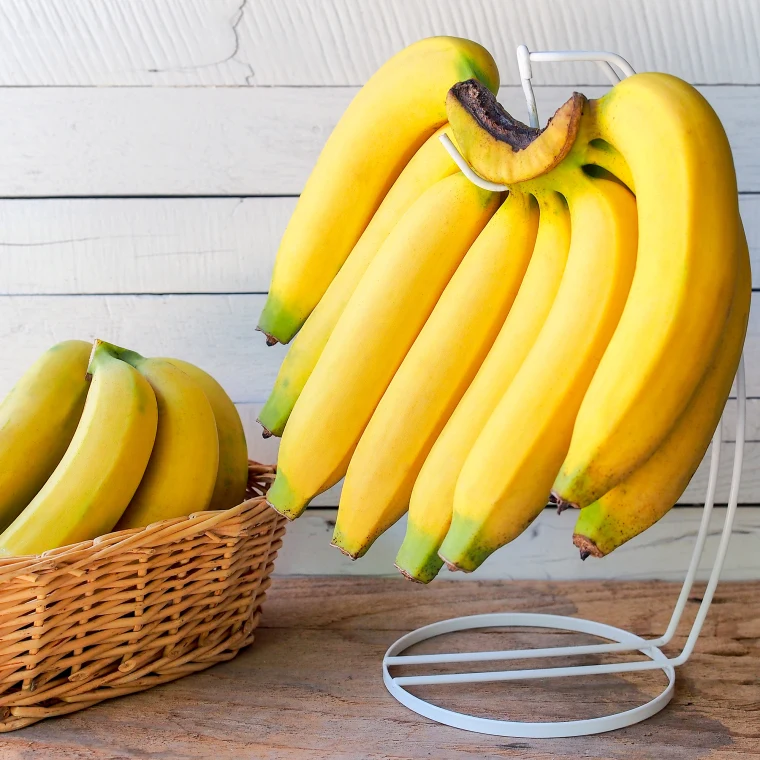
Though bananas turn brown on the outside in the fridge, the inside stays firm and fresh for longer. Refrigeration slows down ripening significantly.
- Only refrigerate once bananas are ripe (yellow with or without brown spots). Chilling green bananas disrupts their ripening process and may affect taste.
- Store in the produce drawer of your fridge, unpeeled and wrapped at the stems.
- If peeled, place them in an airtight container with lemon juice to prevent browning.
Shelf life in the fridge: 5–7 days after ripening
Don’t be alarmed by the black skin—the fruit inside is still good!
C. Freezing (Long-Term)
Freezing is the best way to store overripe bananas or preserve ripe bananas for smoothies, baking, or desserts.
How to Freeze Bananas:
- Whole (unpeeled): Simply place bananas in the freezer. Peel will turn black, but the fruit remains usable for baking or cooking.
- Peeled & Whole: Peel bananas and freeze in zip-lock bags or containers.
- Sliced: Slice bananas and freeze on a tray, then transfer to containers to prevent sticking.
- Mashed: Mash bananas, add a teaspoon of lemon juice (to reduce browning), and freeze in portioned containers.
Shelf life in freezer: Up to 3–6 months
4. Eco-Friendly & Natural Tips to Slow Banana Ripening
A. Use Citrus Juice
Lemon, lime, or orange juice slows browning in peeled or sliced bananas. This is especially helpful if you’re preparing a fruit salad or packing lunch.
- Mix banana slices with 1–2 tsp of lemon or lime juice.
- Store in an airtight container in the fridge.
B. Use Banana Preservation Bags or Natural Beeswax Wraps
Eco-friendly, breathable storage bags (made for produce) or beeswax wraps help reduce moisture and slow oxidation. They allow just enough airflow to keep bananas from trapping too much ethylene while preventing quick dehydration.
5. Common Myths About Banana Storage (Debunked)
Myth #1: Refrigeration ruins bananas
Truth: It may blacken the peel, but it extends the fruit’s edibility.
Myth #2: Bananas last longer in fruit bowls with apples or oranges
Truth: Apples and some citrus fruits release ethylene, which speeds up banana ripening.
Myth #3: Plastic wrap around the whole bunch works
Truth: Only the stems need wrapping. Wrapping the entire bunch can trap moisture and cause rot.
6. Ripening Bananas on Purpose? Here’s How
If you ever need to ripen bananas quickly (for baking or smoothies), try these natural methods:
- Paper bag method: Place bananas in a brown paper bag with an apple or avocado to trap ethylene gas and speed up ripening. Ready in 1–2 days.
- Warm oven: Place unpeeled bananas on a tray at 300°F (150°C) for 15–20 minutes.
- Microwave: Pierce the peel, then microwave for 30 seconds–1 minute to soften. Best for immediate use.
7. What to Do With Overripe Bananas
Even brown bananas can be used deliciously! Here are creative ideas:
Banana Bread or Muffins
Soft, sweet bananas are perfect for baking.
Smoothies
Blend with yogurt, plant milk, peanut butter, and oats for a nutritious drink.
Frozen Banana Ice Cream
Blend frozen bananas with cocoa powder or berries for a creamy, vegan dessert.
Banana Pancakes
Mash into oat-based batter for quick, healthy pancakes.
8. Weekly Storage Strategy (Example)
Here’s a simple routine to make your bananas last the whole week and beyond:
| Day | Action |
|---|---|
| Day 1 | Buy a mix of green and yellow bananas |
| Day 2–3 | Store yellow ones at room temp, eat daily |
| Day 4–5 | Move ripening bananas to the fridge |
| Day 6 | Freeze any overripe ones for smoothies |
| Day 7+ | Use frozen bananas in recipes or thaw for use |
Final Thoughts
Bananas may be fast-ripening, but with a little care and smart storage strategies, you can enjoy them fresh for much longer. From wrapping stems and using banana hangers to chilling ripe ones and freezing extras, these all-natural methods help you reduce food waste while keeping your fruit budget in check.
No chemicals, no artificial ripening agents—just thoughtful, eco-friendly methods you can trust. With this guide, your bananas will stay fresh, tasty, and ready to eat whenever you are!
